Affiliate links on Android Authority may earn us a commission. Learn more.
Google Play (Android Market) vs Apple App Store - 2012
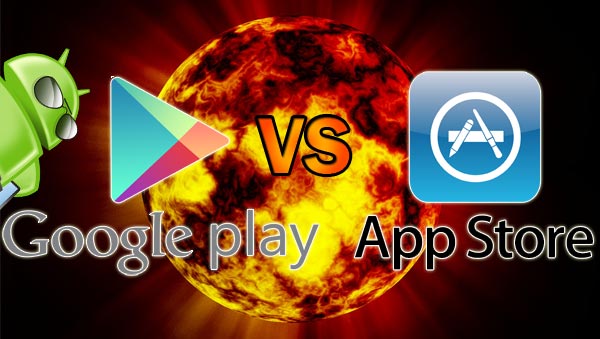
Despite the cool designs and dazzling hardware of today’s hottest and most modern smartphones, many users would agree that apps make the phone. We all know what happened to the likes of Nokia, RIM, and HP simply because they didn’t manage to spur the creation of better app markets. All were completely clobbered after the debut of Apple’s App Store and the Android Market, which is now known today as Google Play. To make matters more complicated, there is also Amazon’s Appstore, which was actually created long before anyone had heard of the Kindle Fire. Nevertheless, apps are what make our devices the magical things we know them to be. Without apps, are devices would be lifeless entities, much like the dumbphones of yesteryear. Apps are everything. So what platform has the best one going? Google, with their Play Store (Android Market), or Apple, with their App Store? Check it out below!
Developers
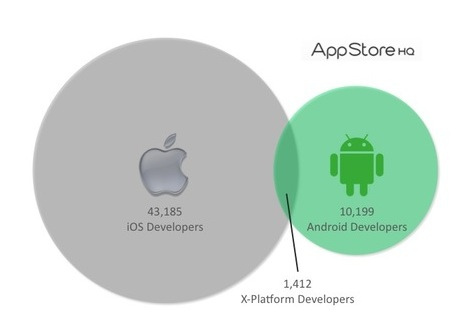
Membership Cost
Before you can even build an application for either market, both Google and Apple require you to cough up some dough. For iOS developers, Apple wants you to hand over $99 whether you are an individual or a company. Google, on the other hand, wants $25 for the sole purpose of keeping their market “less spammy”. Google figures that if they charge $25 one-time, they will scare off bogus developers.
SDK and Language
Apple offers Xcode to their developers that code for Mac, iPad, and iPhone. In addition, iOS apps are restricted to Objective-C, C, C++ or JavaScript as executed by the iPhone OS WebKit engine. Google offers their SDK for free online. Despite being available for Windows, Mac and even Linux, it is not as simple as just downloading and installing one application like Xcode. Furthermore, most all Android apps are coded in Java. But C/C++ apps are not forbidden from the market either.
Downloads and Fragmentation
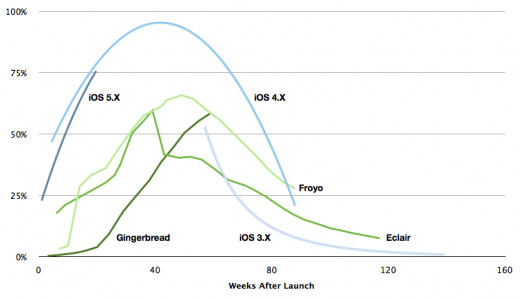
Furthermore, according to GigaOm, 45% of iPhone and iPod Touch users purchased at least one paid app every month. Only 19% of Android users bought a paid app every month. In addition, iOS users almost double Android users in the total number of apps downloaded per month.
Number of apps
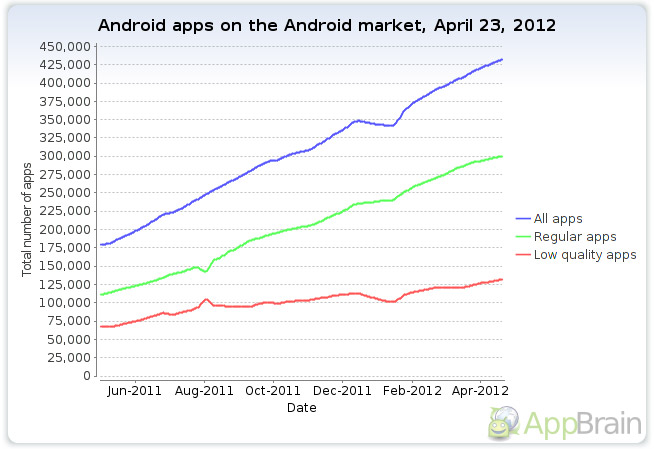
AppBrain, one of the best websites for finding great Android apps, tabulates the number of apps currently in the Google Play Store. At the time of writing this article, the website claims that there were just over 430,000 apps in total at the time of this articles creation. Furthermore, over 311,000 of those apps were free. That translates into about 72% of all of Google Play apps being free. On the other hand, 148apps claims that the App Store currently has over 615,000 apps. The average price of an app in the App Store will run you $2.02. Finally, only 287,000 apps (46%) were free.
iCloud vs. Google’s Cloud
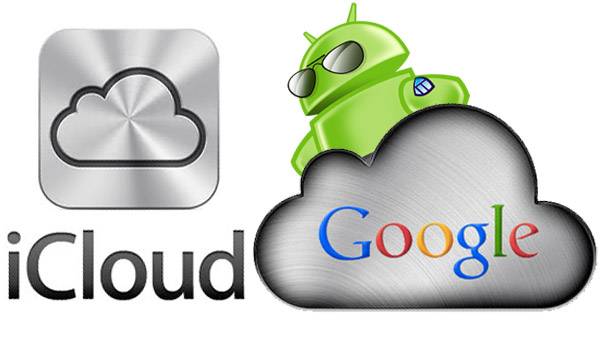
If you own multiple devices, syncing all of your apps, music, and books can become a very tedious job. That is why both Apple and Google offer “cloud services”. iCloud (Apple’s cloud) does a nice job of keeping all of your purchased goods on all of your devices. If you were to purchase an app on your iPhone, it would show up on your iPad as well. However, iCloud is lacking one feature that I find very useful.
Instead of just storing your data online for you, Google took it one step further. When you visit Google Play, you can surf through all of your music, books, apps, and movies on any internet connected device. Furthermore, you can even install apps to any of your devices directly from the desktop store. For example, if you left your phone in the car and you really wanted to download Angry Birds but don’t have time to go get it, you can simply go to play.google.com, search for Angry Birds, choose your device and it will magically appear for you.
User Interface
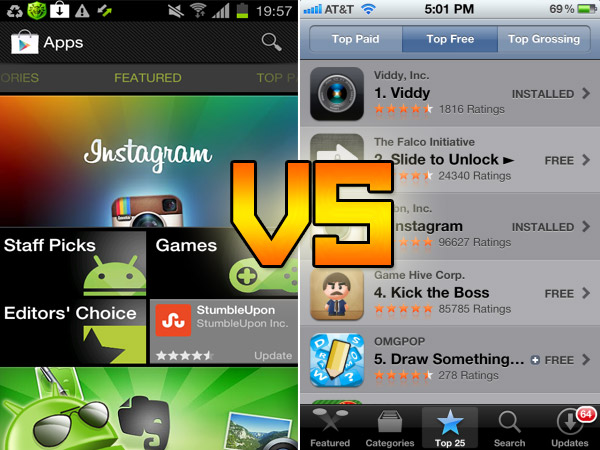
It is certainly no secret that the Apple’s App Store has been around for much longer than Google’s Play Store. But, in the short time that Google’s app market has been around, they have changed the name, added books, movies, music, and have gone through multiple designs, finally arriving at the Play Store you see before you now.
Google Play

The design you see above took Google a few tries. Personally, I believe that this update is by far the best of any previous version. In addition to the landing page with a large featured ad spot, you have quick access to all 4 sections of the market. Moving the focus into the “Apps” section of Google Play, all of the apps have been sorted into 27 categories ranging from Games to Widgets. Google further categorizes their apps into top paid, top free, top grossing, top new paid, top new free, and even trending lists. But, if you already know what you are looking for, the search bar will certainly suffice.
App Store

Like Google Play, the App Store also has a landing page with featured apps. In addition, Apple and Google use similar categories to sort their apps. The only main difference between the two markets is that Google has chosen to use big and vibrant pictures to represent new and featured apps, books, movies, and music, and Apple has not. Although many people could argue that “ads” are just annoying, the makers behind the health app RunKeeper would disagree. After becoming featured in the Android Market, the app saw a 637% increase in downloads. Finally, Lightbox was a featured app during the holiday season of 2011 and received over 500,000 of the 1.2 billion total downloads that occurred during that time period.
Content Management Client
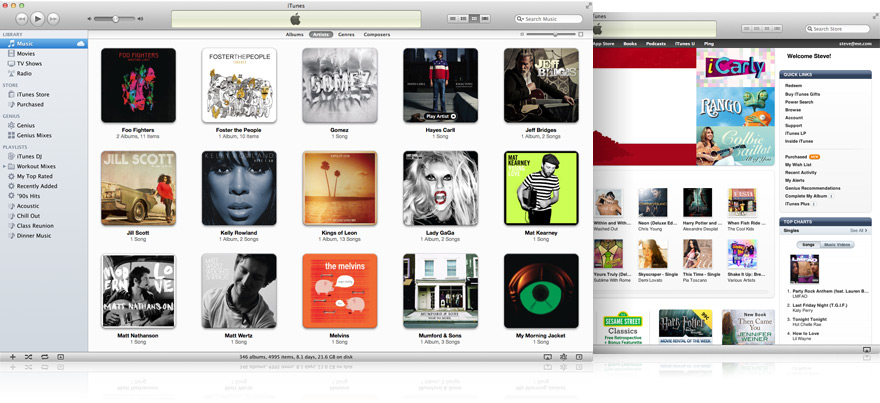
iTunes, Apple’s cornerstone for the past decade, is a Mac and Windows application for buying, organizing, and playing music and movies. Not only can you search and buy new music, but all of the content you have downloaded on any of your devices can be found in iTunes. Making new playlists, watching movies, and even syncing to your devices is all part of iTunes’ job, for better or for worse. In fact, it’s worth mentioning that iTunes is often iDevice owners’ main complaint with the platform, as there is simply no way to avoid using it – short of jailbreaking the device.
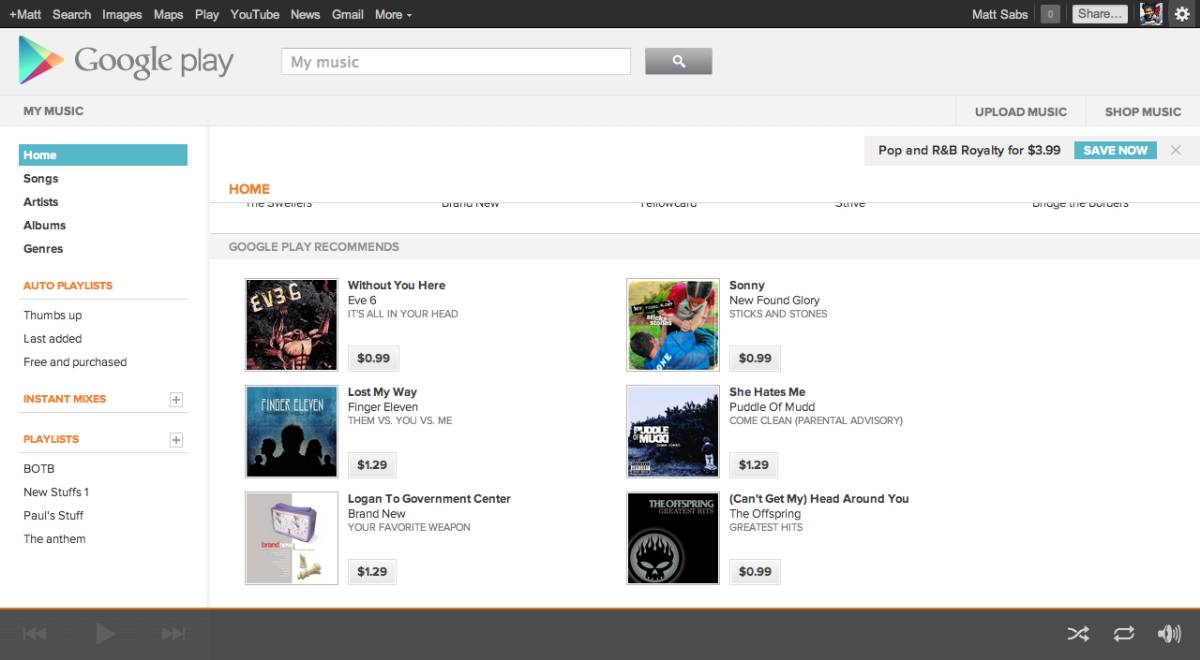
On the other hand, Google recently introduced an online marketplace. Along with the new version of the Android Market, otherwise known as Google Play, Google has re-introduced their cloud management client. First used as just an online music player, Google Play now allows you to manage all of your music, apps, books, and even movies. Furthermore, by visiting Google Play on any internet connected device, you can play all of your music just like on iTunes. You can also read all of your books, and manage your movies and apps between any of your Android devices directly from the Google Play website.
Recap
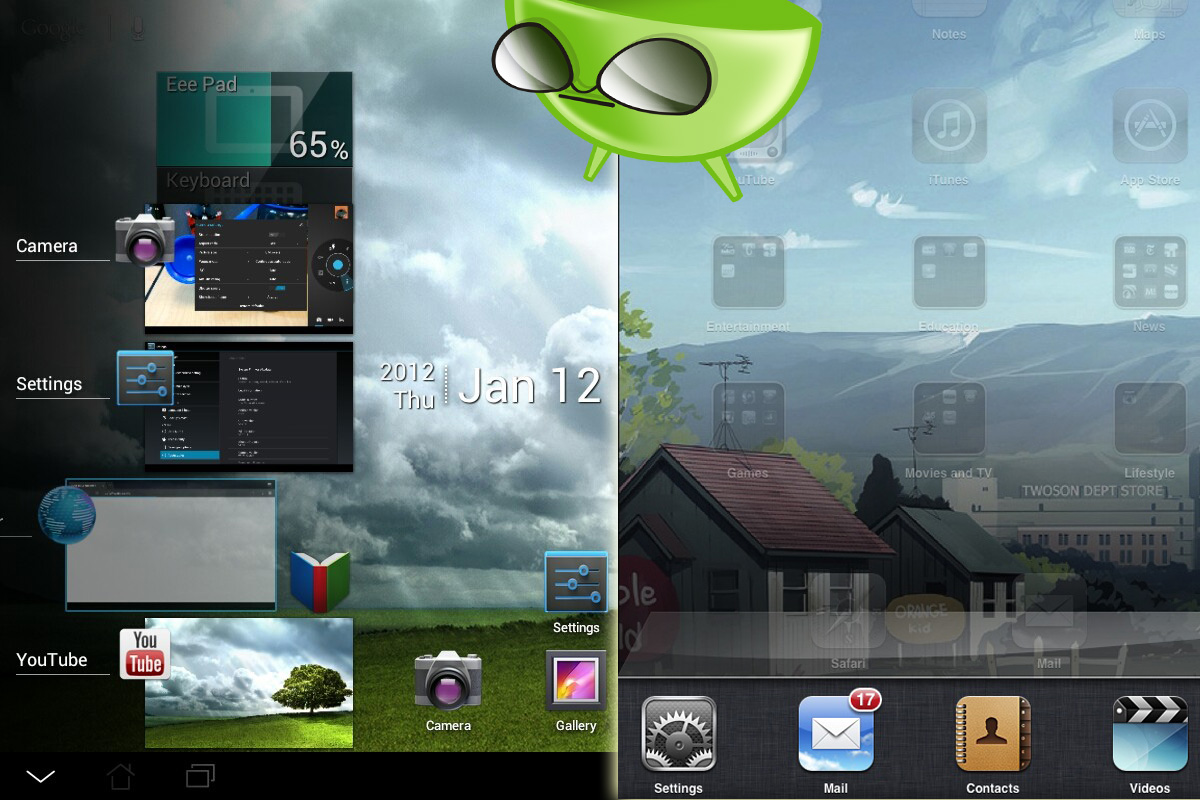
As you can see, both markets are very similar in a lot of ways. Although the App Store definitely has the advantage with developers, the overwhelming number of Android users are beginning to attract developers over to the Android platform en masse. For those seeking a more mature and established platform, iOS has been around much longer and therefore has had time to develop and improve their iTunes software and respective App Store. However, Google has quickly put together an online client that allows you to sync up your music and play it from anywhere. In short, there really is no clear winner here in this contest, except for you and I, the consumers. Both are robust, full of great apps, and are fantastic at helping you find what you are looking for. If anything, you would be wise to consider sites like Appbrain and others if your quest is finding apps that are hidden in the fold somewhere.
At the end of the day, what matters not is the number of apps, or the number of downloads. Smartphones, tablets, and Google and Apple are not going anywhere, and we are all witnessing the beginning of a revolution in how we access, use, and play with our mobile devices! So – what say you, dear reader? Apple’s App Store, or Google’s Play Store? Who shall reign victorious? What is the better place for apps? Let us know!
[poll id=”43″]